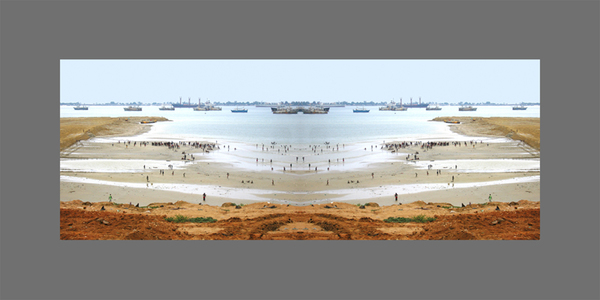
Double vision, 2006. Light box. 124 x 250 x 19'5 cm. Edition 3 of 3. |
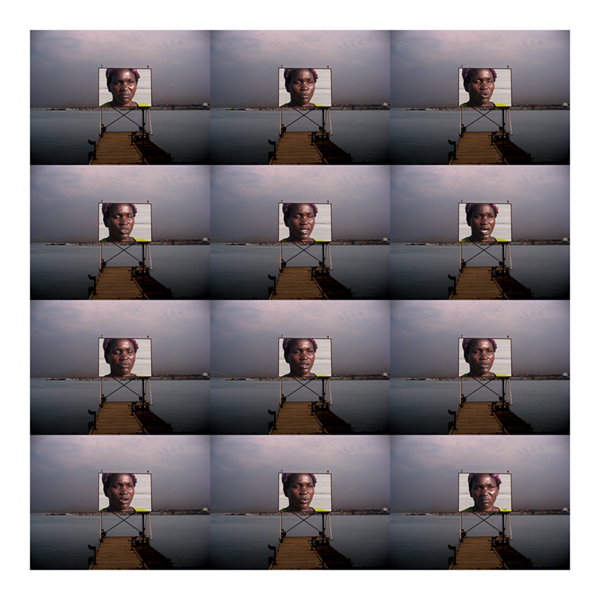
The salt of the sea, 2006. Colour photography. 161'3 x 161'3. Edition 1 of 6. |

Hope 1, 2006. Colour photography. 75 x 214'4 cm. Edition 1 of 6. |

Hope 2, 2006. Colour photography. 75 x 214'4 cm. Edition 1 of 6. |
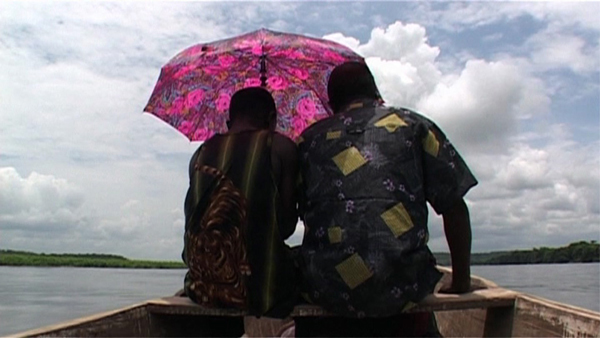
Muxima (película), 2005. Video. 36'. Edition 3 of 6. |
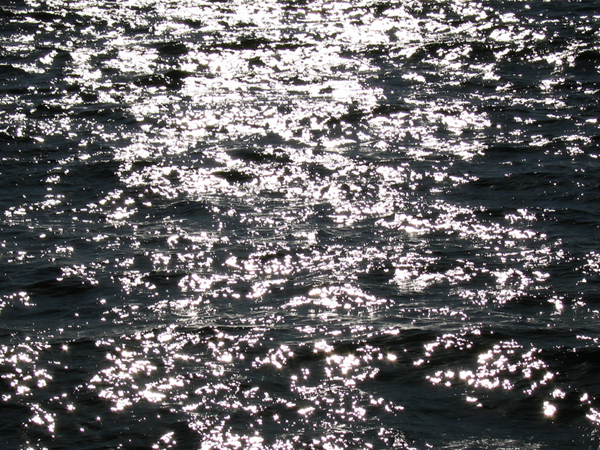
One million points of light, 2006. Light box. 35'5 x 47'5 x 13 cm. Edition 1 of 6. |
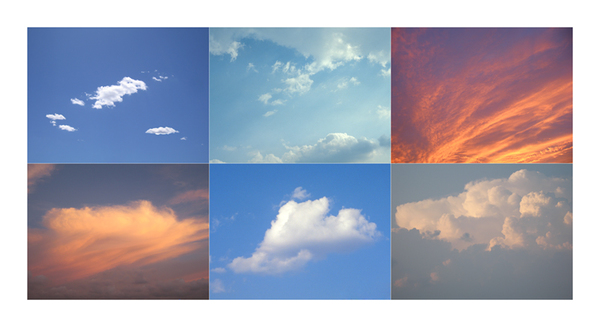
An atlas of clouds, 2006. Colour photography. 100'3 x 176'2 cm. Edition 1 of 6. |

The problems of the people, 2006. Fotografía color. 62'4 x 176'5 cm. Edición 1 de 6. |
Along the history, the art has focused and thought in an insistent way about the consequences that wars and massacres have had on the humanity. Since Alfredo Jaar first came to international attention in the Aperto section of the 1986 Venice Biennale, the topics derived from these questions have turned into the center of his productions, especially because of his trips across different countries of America, Africa and Asia.
Jaar conceives this exhibition as a cinematic elegy dedicated to the people of Angola. The homage begins with the same title of the exhibition, Muxima, heart in Kimbundu, an indigenous language of Angola. Alfredo discovered this word and its meaning when, during the process of organization of his extensive collection of Angolan recordings, he realized that he had in his possession six different versions of a song called Muxima. All these versions where recorded between 1956 and 1998 and they are sonorous witnesses of Angolan history.
In 2004 Alfredo Jaar travelled for the first time to Angola. The exhibition presented in our gallery is the result of this trip and the later ones to the African continent. When he arrived he found a country that had just gone out of a bloody civil war that faced two political groups that wanted to govern Angola after his independence from Portugal in 1975. Each group was supported for the principal world powers that had faced during the Cold War.
The civil war ended, but his effects, the corruption and the strong economic contrasts were still omnipresent. The dream of development and the absolute liberation stays still far. The 80% of the population continue living in the absolute poverty - in spite of being a rich country in natural resources as oil or diamonds-, and with the threat of the AIDS and the 18 million antipersonnel mines arranged by the whole Angolan territory.
With two light boxes, five photographs and the movie Muxima (with the great interest of the music that take part on it), the artist searches the public to react in a way that his work turns into an instrument to create a critical conscience and a denunciation of the political and ideological schemes that disturb the relations of the different worlds.
Not less important than the film we found the beautiful photographs that take part in the exhibition. Jaar is looking for the spectator to be affected; or in another way: that the images continue having meaning but refusing to show the most common and degrading -representations of what we might consider to be unrepresentable- that we see in the news.
One Million Points of Light was taken in Luanda in the precise direction of Brazil. When Angola was a Portuguese Colony, it is estimated that it “exported” one million Angolans to Brazil as slaves.
The six cloud images that conforms An Atlas of Clouds were taken in 6 different African countries where the artist has worked and developed projects: Rwanda, Angola, South Africa, Nigeria, Namibia and Congo.
The Salt of the Sea shows a segment from Muxima the film being projected onto a screen facing the sea in Luanda. It shows the distressing face of a woman searching for her disappeared daughter, one out of one million Angolans who disappeared during the 27 years of civil war. This photograph makes a clear reference to a Pessoa poem where he wonders how much of the salt in the sea is coming from the tears of Portuguese widows.
The two photographs called Hope show two young men which belong to the new generation of Angolans next to a long black area. The obscured area of the image suggests a partial vision, a clear recognition of photography’s incapacity to give a complete picture of a country and its people. It also suggests a difficult past that the new generation is ready to forget as they want to create a new future for the country and themselves.
The Problems of the People is a photograph of a banner took in Luanda. The text reads: “the most important is to resolve the problems of the people”. The artist found this text brilliant in its directness and simplicity, a perfect program for any government in the world. By repeating the image three times and fading the background, the text becomes more present and unavoidable.
In Double Vision hundreds of children play joyfully in a beach in the outskirts of Luanda. In the background appear the only signs of a fast industrialization process that has failed, until now, to affect positively the lives of these innocent children. The image has been doubled, suggesting that the economy might grow, but as far as these children are concerned, it is just a mirage.
Alfredo Jaar, architect and filmmaker, works and lives in New York for 25 years. His work has been shown all across the world and he has participated in the Kassel Documenta and the Biennials of Venice, Istanbul, Sydney, Sao Paulo, Johannesburg and Kwangju. In 2000 he obtains the Mac Arthur Fellowship Grant, one of the greatest recognitions of the artistic world.
At the end of May 2006 he received the prize of The best artistic career of an iberoamerican artist, given by the Regional Government of Extremadura. The president of the jury was José Saramago.
The first exhibition of Alfredo Jaar in this gallery took place in 1991, Terra non Descoperta, the next one Serie de la sal (1994), El silencio de Nduwayezu (1997) and the last one, El lamento de las imágenes (2003) that reported the Off prize of Photoespaña of the same year.

